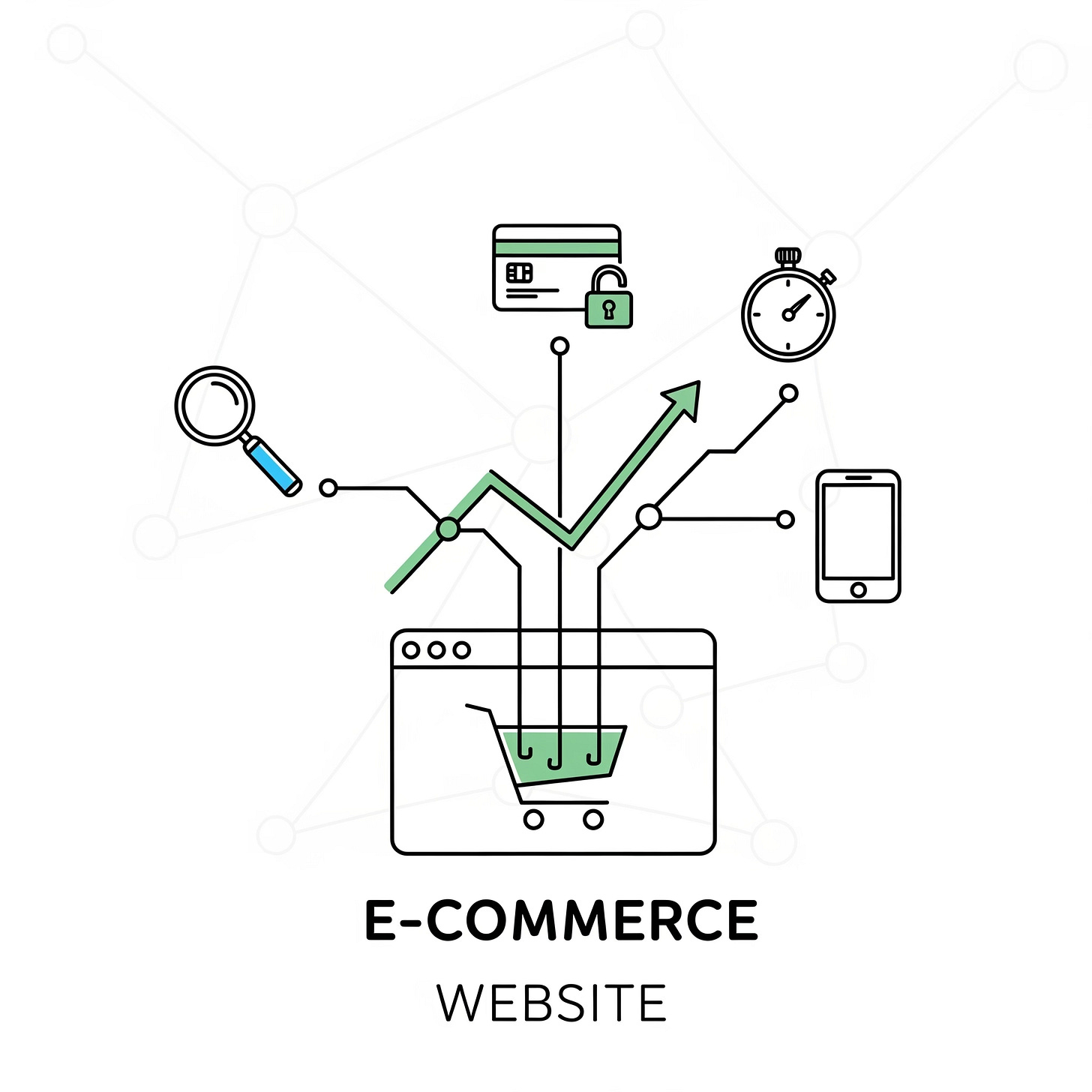E-commerce Website Design Principles for Maximum Sales
Beyond the Browse: A Guide to E-commerce Design That Turns Clicks into Customers 💻🛍️💰
In the competitive world of online retail, your e-commerce website is your most valuable asset. It's your digital storefront, your sales team, and your brand's first impression. A well-designed e-commerce site isn't just about looking good; it's about guiding visitors from discovery to purchase with as little friction as possible. E-commerce website design principles are the strategic rules that ensure your site is intuitive, trustworthy, and optimized for maximum sales.
Many businesses make the mistake of focusing only on aesthetics, overlooking crucial design principles that directly impact user behavior. This oversight can lead to a beautiful site with a high bounce rate, abandoned carts, and ultimately, low sales. For any business owner or marketer, a strategic approach to e-commerce design is essential for turning a visitor into a paying customer. This guide will walk you through the key principles that create a seamless shopping experience and drive revenue.
The Core Principles of High-Converting E-commerce Design 🤔
A high-performing e-commerce site is built on a foundation of trust, simplicity, and speed.
Trust and Credibility: Your website must look and feel professional. Customers won't give their credit card information to a site that looks suspicious or outdated.
Clarity and Simplicity: The user should be able to find what they're looking for and understand the checkout process with ease. A confusing site creates friction and frustration.
Speed and Performance: Every second counts. A slow-loading site will lose customers, especially on mobile.
Mobile-First Design: The majority of online traffic now comes from mobile devices. Your site must be designed to work flawlessly on a small screen.
Essential Design Principles for Maximum Sales 🚀
1. Intuitive Navigation and Search 🔍
Best Practice: Make it incredibly easy for visitors to find what they're looking for, whether they know it or not.
How-To:
Clear Categories: Organize your products into logical categories and use a simple, persistent navigation menu.
Powerful Search Bar: Place a prominent search bar at the top of every page. Include features like auto-suggest and filtering to help customers narrow down their search.
Filter and Sort Options: Allow users to filter products by color, size, price, or rating. This is essential for sites with a large inventory.
2. High-Quality Product Pages 📸
Best Practice: Your product page is the digital equivalent of a salesperson. It must provide all the information a customer needs to make a confident decision.
How-To:
Stunning Visuals: Use high-resolution photos and videos that show the product from multiple angles. Include lifestyle shots that show the product in use.
Clear and Concise Descriptions: Write compelling product descriptions that highlight the benefits, not just the features.
Social Proof: Include customer reviews, star ratings, and testimonials. This builds trust and encourages new buyers.
3. A Seamless and Secure Checkout Process 🔒
Best Practice: The checkout process should be as fast and simple as possible. This is where most sales are lost.
How-To:
Guest Checkout: Don't force users to create an account. Offer a guest checkout option to reduce friction.
Single-Page Checkout: Consolidate the checkout process into a single, simple page to reduce the number of clicks and prevent cart abandonment.
Clear Progress Bar: Show users where they are in the checkout process.
Trust Seals: Display trust badges and security logos (e.g., SSL certificate, trusted payment providers) to reassure customers that their information is safe.
4. Smart Use of Visuals and CTAs 🛒
Best Practice: Guide the user's eye toward the most important elements on the page.
How-To:
Prominent Calls-to-Action (CTAs): Your "Add to Cart" button should be a different color from the rest of your site and should stand out. Use clear, action-oriented text.
Whitespace: Use plenty of white space around your products and CTAs. This creates a clean look and helps important elements stand out.
Mobile Optimization: Ensure all buttons, especially the CTA, are large enough to be easily tapped on a smartphone screen.
5. Prioritize Speed and Performance ⏱️
Best Practice: A fast website is a selling website.
How-To:
Optimize Images: Compress all images to reduce file size without losing quality.
Use a Reliable Host: Choose a hosting provider that is optimized for e-commerce and can handle high traffic volumes.
Simplify Code: A clean, lightweight code base loads faster and provides a smoother user experience.
By implementing these core design principles, you can create an e-commerce website that not only looks great but is also a powerful tool for driving conversions, building trust, and growing your business.
Is your e-commerce site struggling to convert? Visit FunctioningMedia.com for expert e-commerce website design services that build a fast, secure, and user-friendly site optimized for maximum sales. Let's make your website a revenue-generating machine.
#EcommerceDesign #WebsiteBuilding #WebDesign #UXDesign #ConversionRate #BestPractices #OnlineShopping #EcommerceTips #DigitalMarketing #FunctioningMedia



